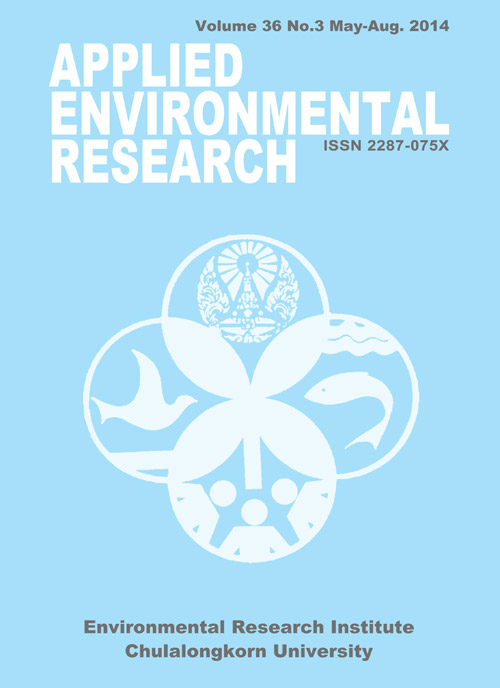Perchloroetylene and Dibutyltin Dichloride Removal from Packed Column by Surfactant Solution
Main Article Content
Abstract
Surfactant enhanced remediation is viewed as a potential method for removing organometallic compounds from contaminated aquifers. Dibutyltin dichloride (DBT), as a representative organometallic compound, was applied in sand packed columns to observe its solubilization behavior compared to that of perchloroetylene (PCE), a normal organic solvent. Ottawa sand was used as the porous media. A mixture of DBT and PCE was applied as the contaminant. The tracer study exhibited the plug flow condition with a retention time of 79.9 min. The surfactant solution was a mixture of 3.6 wt % SDHS and 0.4 wt % C16DPDS with various concentrations of CaCl2. The column experiments were carried out by single and gradient surfactant systems. The effluent exhibited a general solubilization pattern for PCE, governed by a rate limiting mechanism. However, the concentration of DBT in the effluent observed in every experiment was just a slice of its solubilization capacity. The adsorption of DBT on the sand was suspected to be the cause of the problem. The solubilization of DBT by a surfactant was ineffective at removing DBT from the contaminated media. It may be concluded that DBT exhibits the properties of both an organic and inorganic compound; it could be solubilized by a surfactant and absorbed strongly on sand. Nevertheless, the results indicate that trapped DBT could be removed by mobilization in the form of a PCE-DBT mixture and that adsorption could be prevented by a very low pH condition.
Article Details

This work is licensed under a Creative Commons Attribution-NonCommercial 4.0 International License.
Published articles are under the copyright of the Applied Environmental Research effective when the article is accepted for publication thus granting Applied Environmental Research all rights for the work so that both parties may be protected from the consequences of unauthorized use. Partially or totally publication of an article elsewhere is possible only after the consent from the editors.

